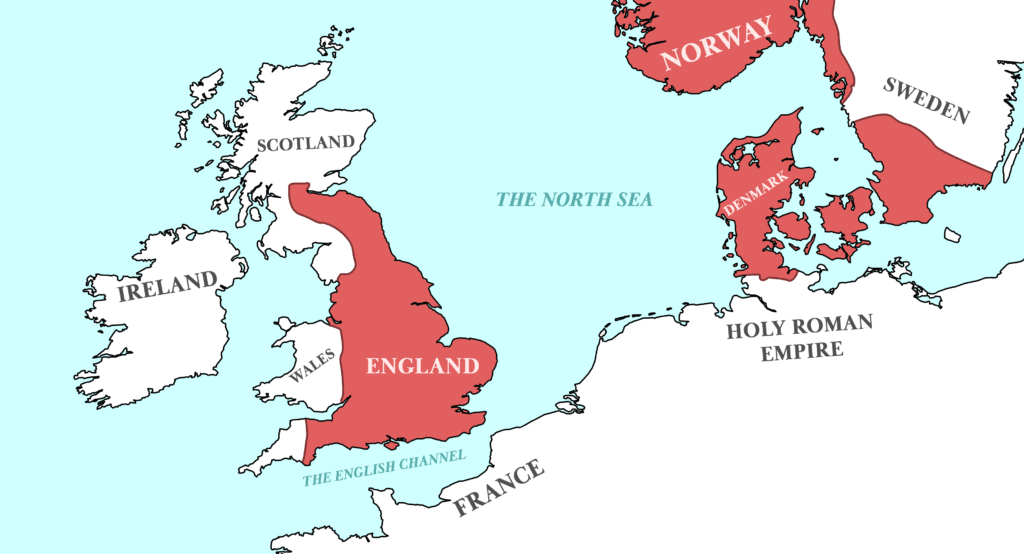
The wise Viking King Who Knew His Limits
Early Life and Rise to Power
Cnut was born around 995 AD, the son of the Danish king Sweyn Forkbeard and a Polish princess. His early life was marked by the turbulent politics of the Viking Age, a period characterized by frequent raids and battles for control over territories in Northern Europe.
In 1013, Sweyn Forkbeard invaded England, and Cnut accompanied him. Sweyn’s conquest was short-lived, as he died in 1014, leaving Cnut to continue the campaign. After a brief retreat to Denmark, Cnut returned to England in 1015 with a formidable fleet and army. By 1016, he had successfully defeated King Edmund Ironside, securing his position as the King of England.

Reign in England
Cnut’s reign in England began in 1016 and lasted until his death in 1035. He is often remembered for his effective governance and efforts to integrate the Anglo-Saxon and Viking cultures. Cnut maintained the existing English legal and administrative systems, which helped stabilize his rule. He also married Emma of Normandy, the widow of the previous English king, Æthelred the Unready, which helped legitimize his claim to the throne and fostered alliances with Normandy.
One of Cnut’s significant achievements was his ability to maintain peace and order in England. He implemented a fair and just legal system, which earned him the respect of both the Anglo-Saxon and Danish populations. His reign saw the construction of churches and monasteries, reflecting his support for Christianity and the church.

Expansion of the North Sea Empire
Cnut’s ambitions extended beyond England. In 1018, he became King of Denmark following the death of his brother, Harald II. This unification of England and Denmark marked the beginning of what is often referred to as the North Sea Empire. Cnut’s influence continued to grow, and in 1028, he conquered Norway, further expanding his realm.
Cnut’s empire was unique in its time, as it brought together diverse cultures and regions under a single ruler. He managed to maintain control over these territories through a combination of military strength, strategic marriages, and alliances. His ability to govern such a vast and diverse empire is a testament to his political acumen and leadership skills.

The Legend of King Cnut and the Tide
First recorded by Henry of Huntingdon, a 12th-century historian, about a century after Cnut’s death, this is a moral tale, emphasizing humility and the recognition of one’s limitations. The story tells that King Cnut weary of the excessive flattery from his courtiers, decided to demonstrate the limits of his power. He had his throne placed on the shore as the tide was coming in. Sitting on his throne, he commanded the tide to halt and not wet his feet and robes. Predictably, the tide continued to rise, washing over his feet and legs.
Cnut then turned to his courtiers and pointed out that the power of earthly kings is limited and that only God has supreme power over the natural world. This act was meant to show his courtiers the futility of their flattery and the importance of recognizing the true source of power.

Legacy and Death
Cnut’s reign came to an end with his death in 1035. His legacy, however, endured long after his passing. He is remembered as a wise and effective ruler who brought stability and prosperity to his empire. His efforts to integrate different cultures and maintain peace set a precedent for future rulers.
After Cnut’s death, his empire began to fragment. His sons, Harold Harefoot and Harthacnut, succeeded him but were unable to maintain the same level of control and unity. Despite this, Cnut’s impact on the history of England and Scandinavia remains significant.





